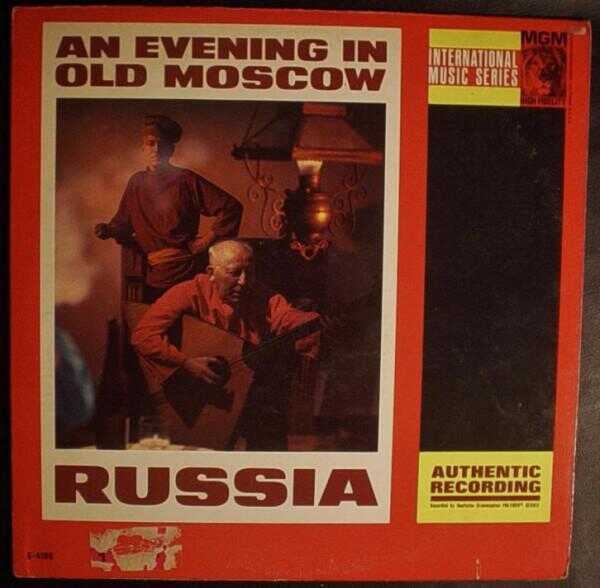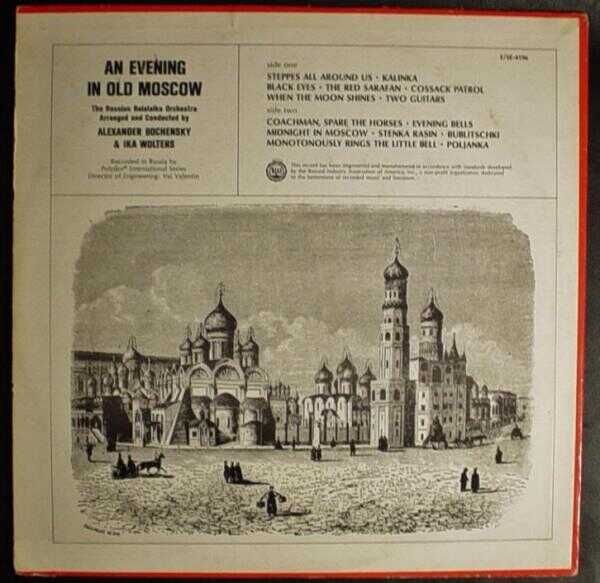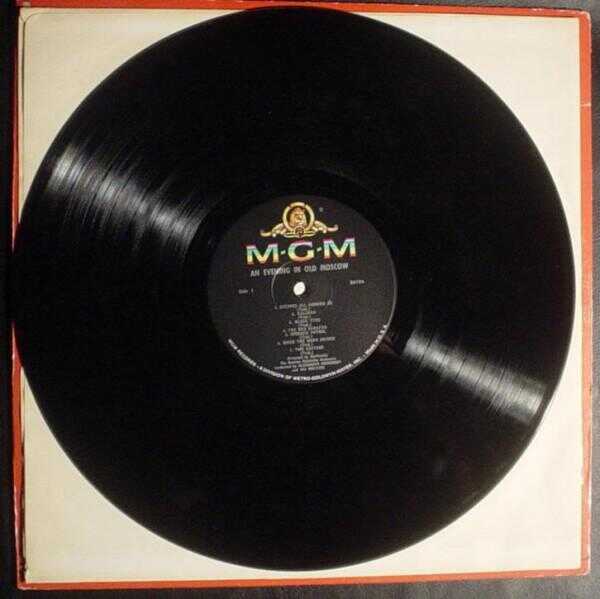Home > Cd's en Dvd's > Vinyl - Wereldmuziek
LP russische balalaika,USA pers'64,MGM E/SE4196
Kenmerken
Soort: Europees
Formaat: 12 inch
Beschrijving
Collectersitem.Promotie phase 4 stereo LP van het orkest en koor Stanly Black.
Deze Lp is uitgegeven ter promotie van de opnametechniek phase 4 stereo, een uitvinding van het label Decca.
In totaal zijn er 200 verschillende LP's uitgebracht met deze opname techniek.
Deze LP is nooit in de vrije handel verkrijgbaar geweest.
Titel: Russia.
Conditie LP: vrijwel nieuwstaat.
Conditie hoes: De hoes ia aan de bovenzijde iets ingescheurd, vermoedelijk een opslagschade.
Dit is zeer eenvoudig te herstellen.
Het Phase 4 stereo principe wordt uitgelegd op de binnenzijde van de hoes.
Datering:1966
Engelse persing
Label: London nr. SP44075
1.
Oh, my field by Lev Knipper
Conductor: Stanley Black
Orchestra/Ensemble: London Festival Orchestra, London Festival Chorus
Period: 20th Century
Written: USSR
2.
Two Guitars by Anonymous
Conductor: Stanley Black
Orchestra/Ensemble: London Festival Orchestra, London Festival Chorus
Written: Russia
3.
Under Moscow Skies by Anonymous
Conductor: Stanley Black
Orchestra/Ensemble: London Festival Orchestra, London Festival Chorus
4.
Balalaika: At the Balalaika by George Posford
Conductor: Stanley Black
Orchestra/Ensemble: London Festival Orchestra, London Festival Chorus
Period: 20th Century
Written: 1936; England
5.
Gayaneh: Sabre Dance by Aram Khachaturian
Conductor: Stanley Black
Orchestra/Ensemble: London Festival Orchestra
Period: 20th Century
Written: 1942/1957; USSR
6.
Dark Eyes by Anonymous
Conductor: Stanley Black
Orchestra/Ensemble: London Festival Orchestra, London Festival Chorus
Written: Russia
7.
Nutcracker Suite, Op. 71a: no 4, Trépak by Peter Ilyich Tchaikovsky
Conductor: Stanley Black
Orchestra/Ensemble: London Festival Orchestra
Period: Romantic
Written: 1892; Russia
8.
Song of the Volga boatmen by Traditional
Conductor: Stanley Black
Orchestra/Ensemble: London Festival Orchestra, London Festival Chorus
Written: Russia
9.
Pictures at an exhibition: no 15, The Hut on Fowl's Legs "Baba Yaga" by Modest Mussorgsky
Conductor: Stanley Black
Orchestra/Ensemble: London Festival Orchestra
Period: Romantic
Written: 1874; Russia
Notes: This track also includes "Great Gate of Kiev."
10.
Quartet for Strings no 2 in D major: 3rd movement, Andante "Nocturne" by Alexander Borodin
Conductor: Stanley Black
Orchestra/Ensemble: London Festival Orchestra
Period: Romantic
Written: 1881; Russia
Notes: Arranger: Malcolm Sargent.
11.
Prince Igor: Polovtsian Dances by Alexander Borodin
Conductor: Stanley Black
Orchestra/Ensemble: London Festival Orchestra, London Festival Chorus
Period: Romantic
Written: Russia
In 1961 London Records introduced Phase 4 Stereo, with promises to break "the sonic barrier." London was a well established American label owned by British Decca (not to be confused with American Decca) that specialized, not surprisingly, in releasing recordings from England.
Liner notes from early releases attempted to explain what "Phase 4 Stereo" was. Phase one was the concept of stereo. Phase two was using stereo as a gimmick (my language), such as having a Ping-Pong ball bouncing from left to right speaker, etc. Phase three was when engineers discovered how to electronically "move" sounds. Individual instruments, voices and effects could be moved left and right and back and forward in the stereo spread. And then, here's the label's explanation of Phase 4 Stereo: "New Scoring Concepts Incorporating True Musical Use of Separation and Movement. In this phase, arrangers and orchestrators re-score the music to place the instruments where they are musically most desired at any particular moment and make use of direction and movement to punctuate the musicality of sounds. The effect is more sound -- more interest -- more entertainment -- more participation -- more listening pleasure: PHASE 4 STEREO is not background music." In 1964 the light classical Phase 4 "Concert Series" was created (see Part 7).
Phase 4 albums quickly became known for their characteristic sound: warm, rich, clean, precisely performed, arranged and recorded. Sometimes the material was corny or not engaging, but you could always count on that sound. Dull, muddy, flat are three adjectives that do NOT apply to Phase 4 Stereo!
Phase 4 started with a 10-channel recording console, which quickly evolved into this 20-channel monster. If you see "+ i.m. 20 c.r." (individually monitored 20 channel recording) at the top of a Phase 4 cover, it means they were using this console. Each channel of the console had equalization and reverb/echo (electronic or chamber), and each channel was assignable to any of the 4 tracks of an Ampex tape recorder. Microphones used included Neumann, Telefunken, AKG and custom built models. For the early to mid sixties this was pretty much state-of-the-art. The average record buyer of the time probably had little idea what it was all about, but it certainly sounded impressive, both in print and on disc.
London also made the claim that Phase 4 albums were mastered with "custom" equipment, and manufactured with strict quality control. One odd detail about Phase 4 albums is that most of the discs were pressed in England by Decca, with the covers printed in America. This is not exclusively the case, as some of the discs of the albums in this article were either pressed in America, or, in one case, Canada. Pressing location doesn't seem to have anything to do with the date of release.
Scores for Phase 4 recording sessions actually included instructions for the engineers telling them where each particular instrument and/or voice was to be placed in the stereo field, and whether the instrument should be recorded on one or two tracks of the tape machine (so it could be panned left or right). These guys were serious about their stereo!
Early Phase 4 releases were dominated by "gimmick" albums, such as the "Percussion" releases (see Part 3) and the historical epics (see Part 2). Eventually Phase 4 became just another popular music label, but their releases always maintained that special sound quality and manufacturing quality control. London Phase 4 never embraced the Rock'n' Roll revolution, and by 1980 the label was pretty much gone.
COLLECTING LONDON PHASE 4 ON LP
Judging from catalog numbers, there were well over 200 releases in the regular Phase 4 series, and close to 200 in the Concert Series. One would have to have pretty wide-ranging musical tastes to enjoy the wide variety of styles the label released. For completists, collector Fred Scheyd has created a discography of the London Phase 4 label.
Most Phase 4 albums can be bought on the collector's market at reasonable prices, but there are some that will demand significant bucks.
Advertentie



